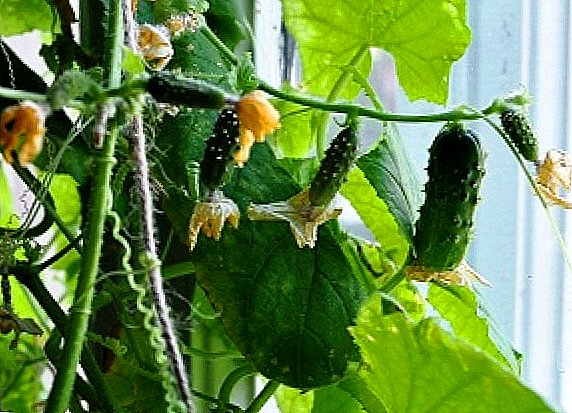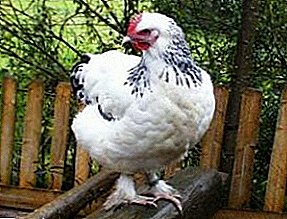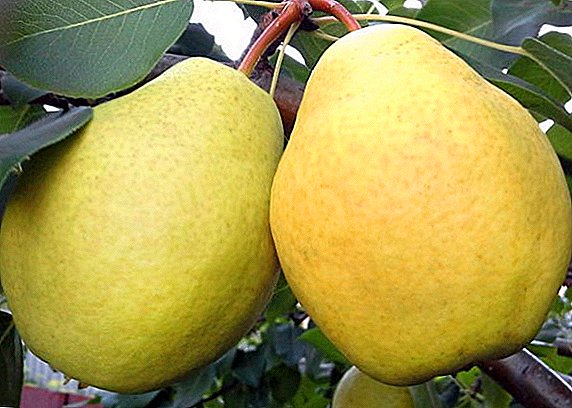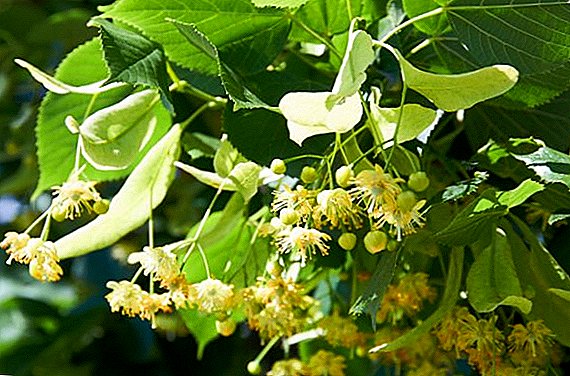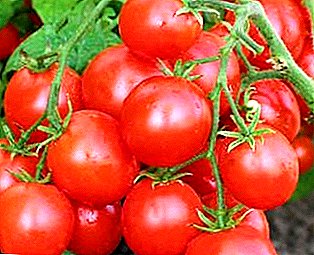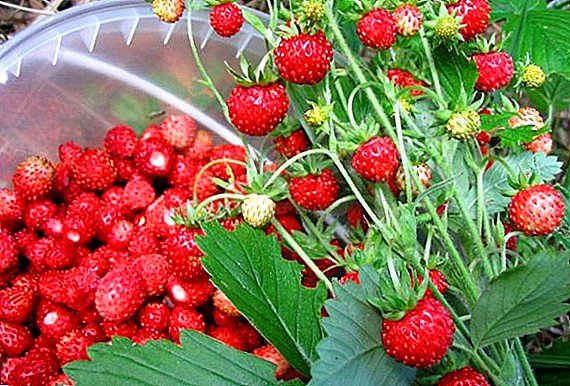 Garden strawberries have long won the title of the most beloved berries among adults and children. She was presented with such a beautiful, attractive appearance, juicy flesh and sweet taste. Strawberries got accustomed to our sites, and the variety of its varieties allows you to enjoy the taste and vitamins of this berry all year round. Experienced gardeners have long ago figured out which varieties are best for growing, and we will tell you more about them.
Garden strawberries have long won the title of the most beloved berries among adults and children. She was presented with such a beautiful, attractive appearance, juicy flesh and sweet taste. Strawberries got accustomed to our sites, and the variety of its varieties allows you to enjoy the taste and vitamins of this berry all year round. Experienced gardeners have long ago figured out which varieties are best for growing, and we will tell you more about them.
Description
Strawberries are traditionally associated by most people with summer, forest and childhood. However, if you ask gardeners to describe this crop, they will characterize it as finicky, requiring a lot of light and moisture. 
For a long time to grow it was really difficult, and the demand for tasty berries grew constantly. Therefore, breeders joined the case, and their active work yielded results.
In addition to the following, strawberry varieties include such as Cinderella, Victoria, Ali Baba, Fresco.
Today it is possible to enjoy strawberries from the beginning of May to the end of autumn. On sale there are many options, we also consider only the best of them.
Did you know? Strawberries and apples are relatives, because both species belong to the family Rosaceae.
Early varieties
Breeders had to try to create early varieties of strawberries in temperate climates. This zone is characterized by frequent frosts in spring, an unexpected change of weather, which this berry does not like. 
However, their labors gave their fruits, and early strawberries boast:
- delicious berries that ripen in late May-early June;
- the ability to generously bear fruit, regardless of the duration of the daylight hours;
- self-pollination.
If you want to harvest early, pay attention to the following options.
Early Crimea
Ukrainian breeders have developed a beautiful view, which is famous for its yield, immunity to disease and bad weather conditions.
It has a neat, semi-sprawling bush, sparsely covered with leaves. In early June, large berries appear, shaped like red cubes, the tender flesh of which charms with its aroma. 
Gardeners love "Early Crimea" for ease of care, because the bush gives a bit of a mustache, and for winter hardiness.
Clery
In contrast to the "Early Crimea", "Clery" loves to scatter thin mustaches throughout the site, trying to capture as much space as possible. But such a deficiency is more than covers the high yield of Clery.
Its tall, upright shrub does not waste strength on sparse leaves, but sends them to grow large berries, which are distinguished by a rich dark red shine and sweet-wine taste. 
Important! The grade is known for frost resistance and with identical success fruits in the open and closed soil.
Honey
The first berries on the tall bushes appear in early May, in the northern regions - closer to the middle of the month. Large fruits of conical shape are cast with a shining burgundy shade and delight us with dense sweetish flesh.
These berries are well tolerated transportation and long-term storage, so they are often grown for sale. Honey has considerable immunity against diseases of the root and foliar systems. 
Calistemon
It was bred by Turkish specialists to ensure high yields on poor soils. Fruits in early May. At this time, on a large sprawling bush ripen berries of conical shape, which will easily embrace the head with a rich strawberry flavor. "Calistemon" rarely gets sick and does not require frequent fertilizing. 
Medium ripening varieties
Species from this category bear fruit in late May - early June.
Under these varieties, 25-30% of the area is usually allocated for strawberry plantings, because such strawberries have many advantages:
- less threat to lose the crop due to weather conditions, as is the case with early varieties;
- harvesting falls on the summer, and by that time the berries have time to fill up with the sun and vitamins to the full;
- berries are sweeter at this time;
- dense peel on the fruit ensures the safety of the form during heat treatment and during transport.
Important! The average weight of ripening berries is 25-30 g, and from the whole bush up to 500 g of strawberries can be collected per season.
Sultan
The excellent result of the work of Egyptian breeders is actively grown on an industrial scale. On large spreading bushes grow bright red berries with a beautiful stem, for which this variety is very appreciated by restaurateurs and pastry shops. 
In addition to excellent taste and external data, "Sultan" is characterized by resistance to gray rot, calmly tolerates both heat and frost.
Turida
This variety is originally from America and is easily recognizable by its bright green leaves. On its large branchy bush and berries grow rather big: on average, 90-150 g. The shape of the fruit may be cubic or more like a comb.
Dark maroon flesh has a juicy sweetness, which gives a slightly muscovy flavor and pleasant aroma. Long-term transportation and heat variety is not very fond, but it is resistant to diseases. 
Late varieties
Strawberries of late varieties of fruits in late June-early July. At this time, the demand and the price of the berry is growing, so you can sell it profitably. And still ripen raspberries with currants, which perfectly complement the strawberries in compotes.
Learn also how to make strawberry jam.
Late varieties feel great in both open and closed ground, they are full of vitamins and useful microelements, but their cultivation requires careful maintenance.
Did you know? The Belgian town of Vepion is recognized as the capital of strawberries. All sorts of varieties are grown here, as well as regularly hold festivals and holidays in honor of this berry.
Jam
From breeders "Jema" received a medium-sized bush with spreading branches and a small amount of leaves. The berries of this species are very juicy, with a delicate taste and a wonderful aroma. But the bright red fruits are quite soft, do not tolerate travel. 
Therefore, despite the excellent taste, on sale berries "Jams" is difficult to meet. The variety is not susceptible to disease and gives a lot of whiskers.
Remontny grades
They are very fond of gardeners, because from the bushes of this type of harvest harvested several times a year.
Familiarize yourself with the best varieties of strawberry remontant.
At remontant varieties have many advantages:
- berries appear already in the first year after sowing;
- this strawberry is less susceptible to pests;
- these subspecies adapt to different conditions and soils;
- Bushes have a beautiful shape, so they are often used as a decorative ornament for flower beds.
Did you know? Strawberry leaves, which grow in April-May, provide nutrients for the fruits, but summer-autumn foliage accumulates reserves for the winter season.
This group of varieties is divided into:
- reparative simple species;
- varieties of neutral daylight.
A pineapple
The berry got its tropical name due to the beautiful orange color, although it has the aroma and taste of classic wild strawberries. Bred "Pineapple" Polish breeders, endowing it with resistance to disease (but sometimes the plant is affected by brown or white spot). 
The bush of this species is low, but it actively grows the leaves and spreads its whiskers. Twice a year, in the middle of May and the end of September, large cuboid-shaped berries up to 50-60 g in weight appear.
Consul
This multi-crop variety is the result of Egyptian breeding. The first berries on small sprawling bushes appear in early May and delight in a rather rich harvest, as for such an early time. The next harvest falls in the second half of September.
"Consul" is distinguished by its high quality of berries: they are sweet, soft, but they tolerate transportation well, and their flesh has no voids. The variety is easy to grow, because it rarely gets sick, gives a little mustache. 
Queen Elizabeth II
High quality of berries made this variety the most popular among remontant ones. The fruits of the "Queen" are large, beautifully shaped, with a rich red lacquered surface. And the taste of the berries resemble honey rather than ordinary strawberries.
Important! For the "Queen" is important full maturation of the crop, otherwise its taste will not be fully disclosed.
Its bushes begin to bear fruit in May, and by the end of November they manage to give 1-2 additional crops. About 1–1.5 kg of berries are harvested from one bush, and 4–6 plants will yield up to 12 kg per crop. At the same time, the weight of one berry reaches 40-50 g. If the weather conditions deteriorate sharply, the fruits change their shape, elongating and gaining weight up to 80 g.
Dense pulp allows strawberries to maintain an attractive appearance during freezing or during heat treatment. The “queen” is good against pests and diseases, but with prolonged rains and dampness, the bushes are better treated with phytosporin or “Integral”. 
Every 3 years of planting this strawberry must be updated, otherwise its berries are crushed and lose their honey taste.
Mount Everest
The second name of the variety - "Mont Everest" - gives out its French origin. Characteristics for "Everest" - yield and beautiful appearance.
In a good gardener, the species bears fruit twice a year: at the beginning of summer and closer to autumn. Up to 800 g of berries are picked from a bush at a time, the average weight of each is 20-50 g. From 1 sq.m. it turns out up to 2 kg of strawberries.
As for the appearance, then you can learn "Everest" by small, but lush bushes that are well tolerated wintering. The berries have a cone-shaped shape, bright red color and very juicy, dense pulp with rich taste. 
Did you know? Strawberry loves to grow on the soil where dill, parsley, and beans were before it, but it doesn’t get well after cucumbers, cabbage, and tomatoes.
Hell
The German strawberry variety has a medium-sized bush, which is slightly furrowed around the sides. It has light green frosted leaves, among which here and there tiny flowers flash.
They are quickly replaced by small cone-shaped berries (15-20 g) with white friable pulp. The taste of "Hell" is sweet, but with a slight sourness, which gives the berry a piquant touch.
The variety is well going through winter frosts, however, it is highly susceptible to diseases and pests. Therefore, regular prevention is necessary to preserve the bushes. 
Inexhaustible
In appearance, this variety stands out among other dark, almost bluish leaves that sparsely cover a razlohy bush. "Inexhaustible" was derived in the USSR, but today it can compete with more "young" varieties in terms of its yield.
It has not very large berries of a bluntly conical shape (5-6 g), covered with a shiny skin with greenish seeds. However, the taste of pink with white streaks of flesh is unique. The plant directs all forces to the cultivation of fruits, so the whisker gives little. 
Important! The “Inexhaustible” does not suffer from special sensitivity, but often undergoes attacks of powdery mildew.
Sakhalin
This variety was made popular not only for its wonderful taste, but also for its healing properties. The use of strawberries "Sakhalin" is recommended for people suffering from digestive problems, in violation of salt metabolism, anemia.
The curative effect it provides a composition rich in potassium, sodium, manganese, iodine.
It is one of the first to produce crops in June, and if it is pre-covered with a film in the spring, the fruits will appear earlier. Good seedlings will give a harvest in the first year, giving the opportunity to enjoy the sweet pulp. 
This strawberry is characterized by fragrant aroma and beautiful shape, which it retains even during prolonged freezing.
Varieties of neutral daylight
Strawberries have always been a plant that didn’t do well with the sun. The lack of light adversely affected the volume and quality of the crop, so the breeders thought about alternative options. Thus arose varieties of neutral daylight.
It will also be useful for you to learn how to grow garden strawberry seedlings from seeds, how to deal with strawberry pests.
Regardless of the duration of daylight hours, they bloom and bear fruit the same, which is at the beginning of summer, which is closer to autumn. If you move the bushes in the greenhouse, the crop can be harvested in November.
Did you know? The homeland of strawberries is considered South-East Asia.
Felice
A relatively new variety, was bred in 2010 in Turkey. It has a small semi-sprawling bush, covered with dark green shiny leaves. 
On it you can observe flowers and berries at the same time, because the plant blooms and bears fruit constantly. The bright red fruits of it, although small, are full of sweet juicy flesh, which exudes a characteristic forest scent. The mustache of a bush gives little, therefore it needs stimulants of rooting.
Decorators use "Felicia" for growing on balconies, alpine slides, flower beds.
Aisha
Unlike “Felicia”, the Turkish variety “Aisha” has bigger sizes. Its bush is densely covered with large leaves of bright green color. During fruiting, large, cone-like berries appear with dense, fragrant flesh and good taste.
After the next harvest, “Aisha” needs only 2 weeks to rest, and then flowers appear again. The mustaches are in a hurry to bloom: the bush lets them go a little, but, not having time to take root, they are already beginning to become covered with buds. 
Last berries appear before the first frost.
Albion
To us this variety came from far America. In the "Albion" breeders successfully combined high yields, resistance to disease and frost, as well as fragrant sweet flesh. In addition, the berries tolerate transportation.
Due to these qualities, the variety is actively used in industrial activity. The first fruits on the bushes appear in mid-May, and the last harvest in the season is harvested closer to winter. Berries in "Albion" are large, in the form of a dark red cone. In the summer strawberry tastes good, but in the fall it becomes truly honey. 
Thelma
This is the result of the work of Italian scientists. Berries on a compact bush appear by mid-May, after the plant you need to rest for 2-3 weeks. The “Telma” has an original shape of berries: large fruits resemble a dissected shiny cone with hollows.
Cutting reveals dense pulp with a sweet taste and light aroma. The variety almost does not get sick, but it gives a lot of whiskers. 
White fruit variety "White Swede"
If you want to add an original touch to the bed and to the table, then plant the "White Swede." This is a beautiful variety with a compact bush, densely dotted with dark green leaves. The crop ripens in the first half of summer, then there appear medium-sized strawberries (25-30 g) of beautiful white color.
Their flesh is slightly sour, but the aroma resembles forest berry. "White Swede" is resistant to diseases, but does not like weather changes.
Important! This strawberry is perfect for people who are allergic to red pigment, and children with a tendency to diathesis.
Beardless varieties
For strawberries, reproduction is typical with the help of antennae - creeping shoots, which eventually take root and give birth to a new plant. For the formation of such sprouts bush spends forces that could be sent to the additional berries in the crop.
It was this thought that prompted breeders to create bezusyh varieties or, in a scientific way, Alpine remontant strawberries.
Unlike congeners, wildless species:
- bear fruit from mid-June to early November;
- have large fruit sizes;
- give from one bush to 1 thousand berries;
- the taste and aromatic qualities are as good as wild strawberries.
In addition, it is much easier to care for beds with varieties without varieties, and their crops are more stable. Here are some of the best alpine remontant culture options.
Yoke
This is a type of universal, famous for its early maturation, resistance to cold and frost. She has the original fruits of red-orange color, and the weight of each berry is about 20-23 grams. Pleasant sweet-sour taste supplements juicy and fragrant pulp. 
The only drawback of the "Coquette" - it does not tolerate pests and various mites.
Did you know? Scientists still can not decide how many species of strawberries exist. According to various estimates, their number varies from 80 to 200. Such confusion arose due to differences in the chromosome structure of the berries.
Lyubasha
The early minus Lyubasha has the same minus. This variety must be protected from pests, and cute bushes will cope with other problems themselves. They are not afraid of cold and frost, calmly reacting to heat.
Large berries weigh an average of 20-25 g, have a sweet taste, juicy flesh and fresh aroma. Fruits tolerate transportation without any problems, so they are bred for sale. 
However, many people simply like the view of beautiful, neat bushes, thanks to which “Lyubasha” is often found on decorative flowerbeds and in pots on window sills.
Bolero
This large-fruited variety was bred at the end of the twentieth century by British breeders.
Its distinctive features are:
- compact bush;
- large (up to 35 mm) berries;
- sweet taste;
- longevity (one bush can bear fruit up to 5 years).
"Bolero" is considered weather resistant grade. Neither severe frost nor drought can affect the volume and quality of the crop. Also, this species is immune to diseases and fungi. 
Small-fruited
Not all varieties of strawberries can boast large forms, but small-fruited species have their admirers. Learn about the most interesting specimens with modest size.
Baron Solemacher
A demanding representative of a subspecies that grows well on soils with a high phosphate content. He is accustomed to stay in the shade, and grows indoors, for example, in balcony pots.
It grows lush bushes, under the broad foliage which hides small sourish berries. Already in the first year after planting, "Solemacher" gives the first harvest and can bear fruit before the autumn frosts. One bush gives up to 0.5 kg of berries per summer. 
Important! Actively fruiting this variety during the first 3 years of life. After this, it is necessary to plant young bushes.
Rugen
Among the strawberry varieties it is an honorary old-timer, because the history of "Rugen" has about 100 years. But he is still loved by gardeners for rich harvests: one bush produces up to 100 berries, which are distinguished by yellowish flesh and excellent taste. The secret of his success is in the abundant foliage that nourishes the plant.
Flowering "Rugen" lasts until October, so compact bushes are often bred at home as an element of decor. The variety does not need a lot of light, it feels good in the premises. In the climate of the middle zone rarely ill, has a stable immunity to pests. 
Ruyana
This Czech variety treats with fragrant berries that are located exactly above the broad leaves. They have a wonderful sweet taste, but it can be difficult to grow Ruiana crops. By nature, the variety is quite troublesome. It needs heavy rainfall, drained soil and regular watering.
At default of conditions its productivity sharply decreases. Planted "Ruyanu" in the shade, under the canopy of trees, where she will not be threatened by drought. 
Holiday
This hybrid was created on the basis of several varieties in the United States. Today it is actively used due to the compactness of the bush, the maximum size of which does not exceed 30 cm. The weight of the berries varies from 10 to 15 g, and they ripen closer to the end of summer.
Variety refers to the dessert, because it has sweet pulp, which is hidden in cone-shaped berries. "Holiday" demonstrates high yield, while it is resistant to the first frost and small pests.
This article will help you determine the varieties of strawberries, which should be chosen for your garden, and luxurious bushes will give charm and comfort to your home. Indeed, in terms of growing strawberries - an excellent choice: it is a beautiful, unpretentious decor and tasty, healthy berry. 
Do not miss the opportunity to please your loved ones with a sweet, healthy berry dessert.
Feedback from network users



